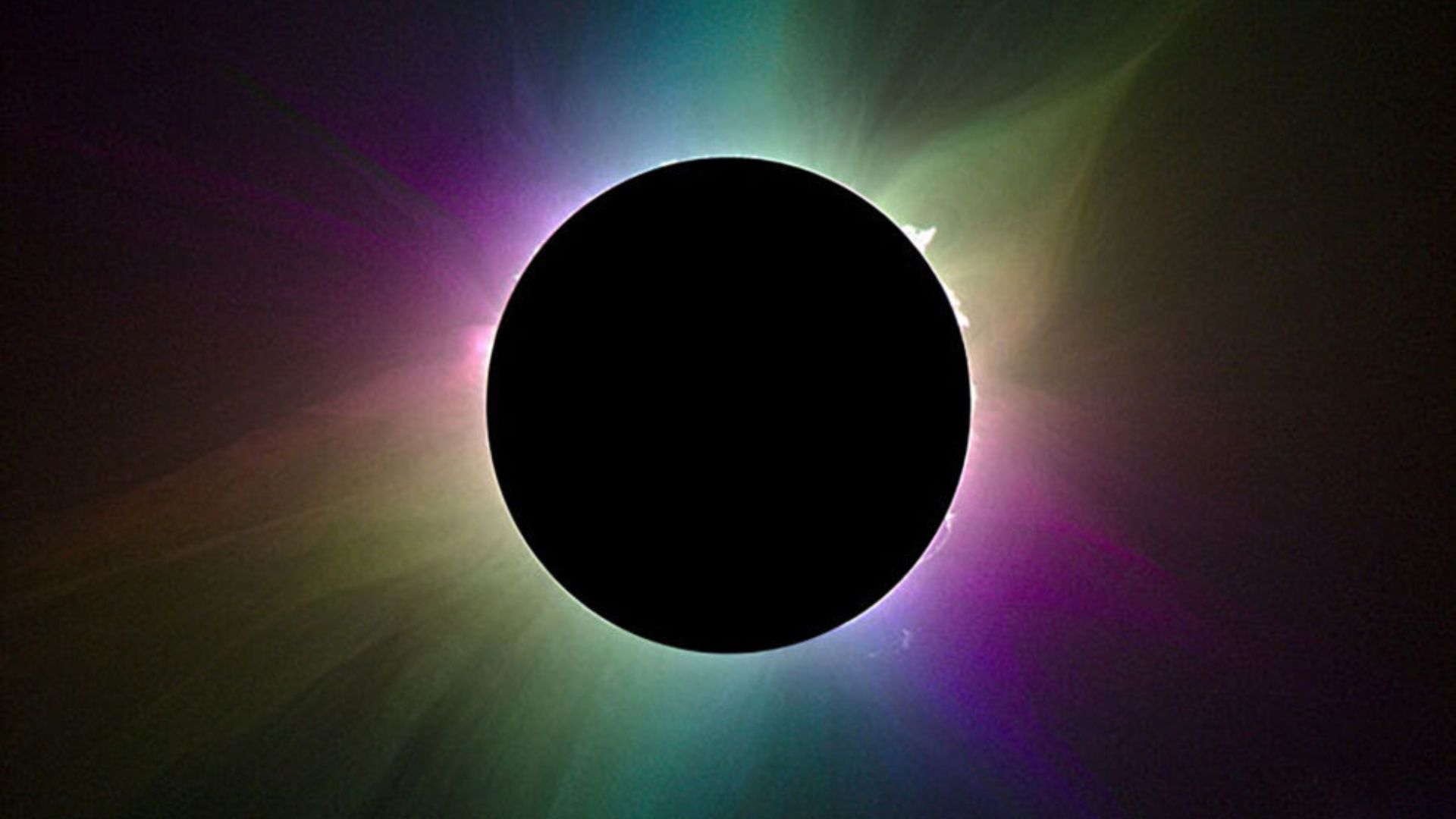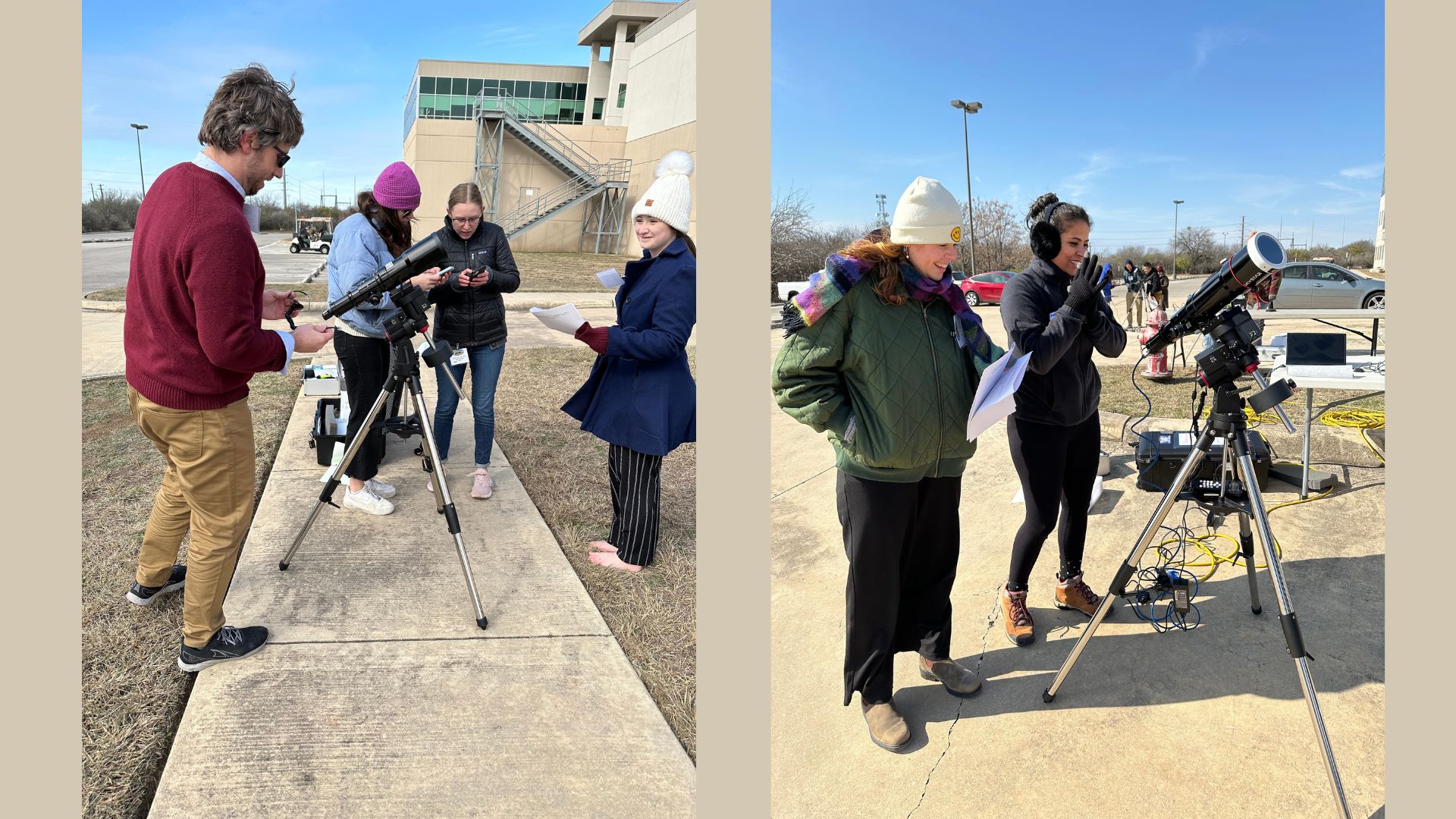
On April 8, 2024, the last total solar eclipse that will be visible in the contiguous U.S. for 20 years is happening. Although totality will not be visible in Colorado, the Laboratory for Atmospheric and Space Physics at the University of Colorado Boulder will be there—as an institutional partner in the Citizen Continental-America Telescope Eclipse (CATE) 2024 project.
The Citizen CATE 2024 project, which is funded by the National Science Foundation (NSF) and the National Aeronautics and Space Administration (NASA), will place approximately 40 teams across the path of totality, from Texas to Maine.
A solar eclipse occurs when the moon passes between Earth and the sun, thereby obscuring the view of the sun from a small portion of the Earth, either totally or partially. In a total eclipse, the disk of the sun is fully obscured by the moon, and its shadow falls across the Earth in a path of totality. Colorado will experience a partial eclipse, with approximately 65% of the sun will be covered.
The CATE 2024 teams of citizen scientists will fan out across the path, where they will join with local community members to observe the solar corona. This outermost layer of the sun’s atmosphere is normally very dim compared to the surface of the sun, making it hard to observe. During a solar eclipse, however, when the moon completely blocks the sun, the corona becomes visible allowing scientists to study different features and characteristics.
The corona is an important feature to study as it is a primary driver of solar wind. This can impact life here on Earth by producing beautiful aurora displays or impacting our power grids. Using specialized space- and ground-based telescopes scientists can see the corona, but only certain parts, such as extremely close to, or far away from, the sun’s surface. This leaves a gap in our understanding of what is happening in the lower and middle corona.
CATE 2024 hopes to fill that gap in knowledge by sending identical specialized telescopes to each of the 40 teams spread across the path of the eclipse. The teams will use the telescopes to take polarization observations of the sun during the brief duration of the eclipse. Polarization observations allow scientists to better understand the direction from which light is coming from the sun and thus better understand the solar corona. When compiled, the teams’ observations of the corona will result in a roughly 60-minute video.

Willow Reed, a communications specialist at LASP and the communications lead for Citizen CATE 2024, will experience the eclipse from Little Rock, Arkansas, where she will participate in one of several outreach hubs involving local community members.
“I was fortunate enough to see the total eclipse in 2017 and I cannot wait to experience it again,” said Reed. “It is one of those events where we can see a community can come together and bond over this scientific experience, which is incredibly inspiring.”
After the eclipse, the telescopes will be donated to various local community sites along the path of totality, including middle schools, libraries, community colleges and more. This way, members of the community will be able to use them for both future solar and astronomy observations.
To learn more about the eclipse and how to safely view it, visit NASA’s eclipse page.
Founded a decade before NASA, the Laboratory for Atmospheric and Space Physics at the University of Colorado Boulder is on a mission to transform human understanding of the cosmos by pioneering new technologies and approaches to space science. LASP is the only academic research institute in the world to have sent instruments to every planet in our solar system. LASP began celebrating its 75th anniversary in April 2023.



